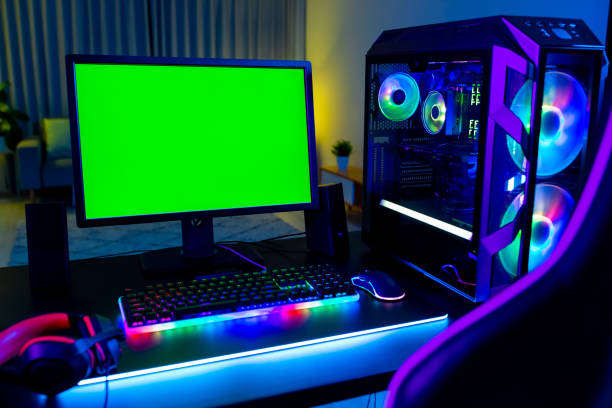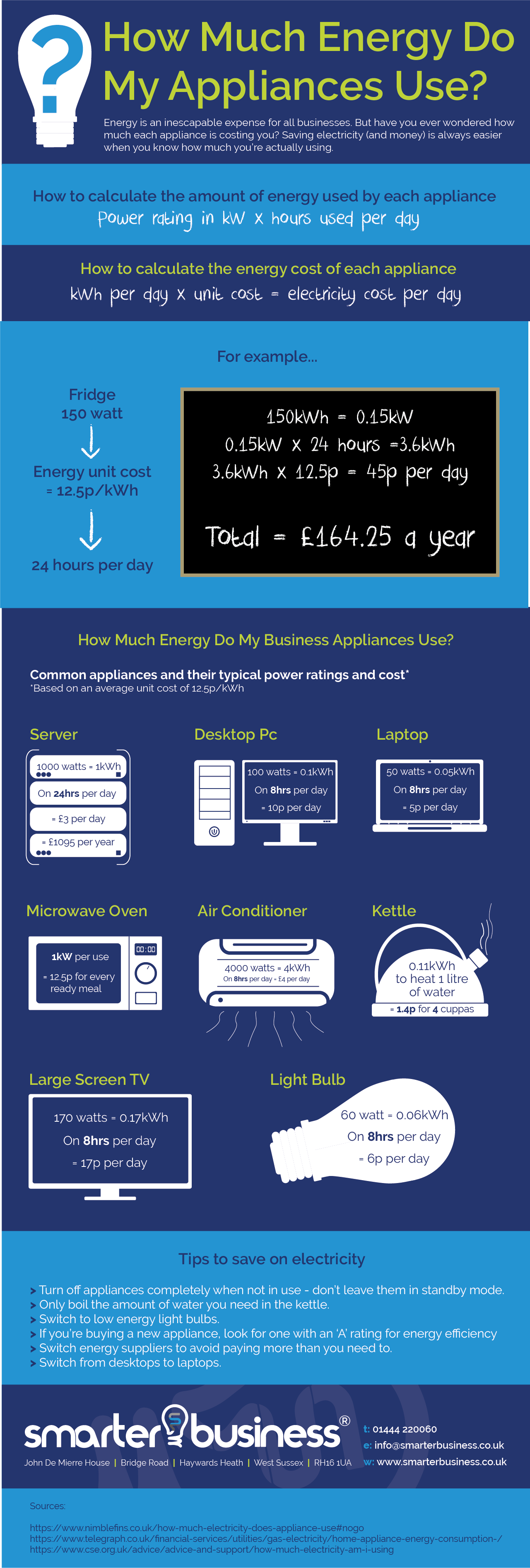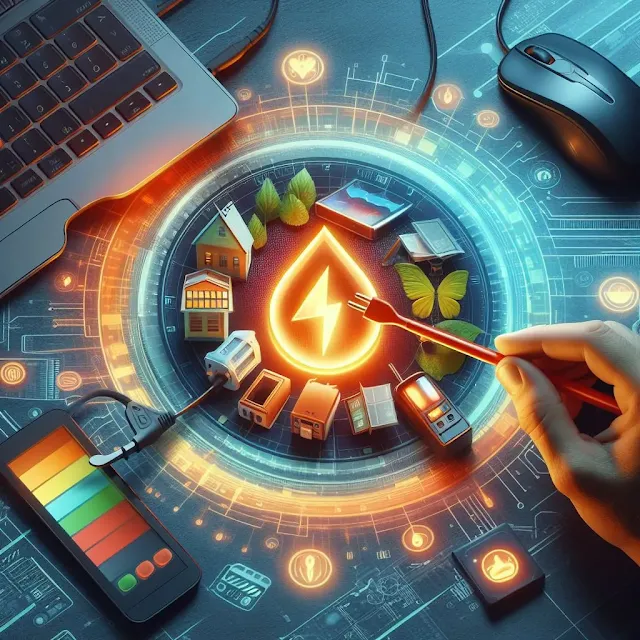How Much Electricity Do Computers Use
Computers use approximately 400 to 800 watts of electricity. This consumption can vary depending on the type and usage of the computer.
The energy consumption of computers has become a significant concern in today's digital world. Understanding how much electricity computers use is essential for both individuals and businesses. With the ubiquitous presence of computers in our daily lives, it is important to be aware of their environmental impact.
This includes the electricity they consume and the subsequent carbon footprint. Additionally, as technology continues to advance, the demand for energy-efficient computing solutions is growing. By being mindful of how much electricity computers use, we can make informed decisions to reduce energy consumption and minimize the environmental impact of our digital activities.
The Impact Of Computers On Electricity Consumption
START BLOG POST
Computers play a significant role in electricity consumption due to their prevalence in modern society. Understanding the energy consumption of computers and the factors influencing their energy usage is crucial for optimizing efficiency.
Energy Consumption Of Computers
Computers consume varying amounts of electricity based on their type and usage. Desktop computers typically use more energy than laptops due to their larger components.
Computers in sleep mode still consume electricity but at a lower rate compared to when actively in use.
Factors Affecting Energy Usage
- Hardware Components: Powerful processors and graphics cards consume more energy.
- Usage Patterns: Continuous high-intensity tasks lead to increased energy consumption.
- Energy Settings: Properly configuring energy-saving settings can reduce electricity usage.
- Peripheral Devices: Printers, monitors, and external drives add to the overall energy consumption.
| Energy Usage Factor | Impact |
|---|---|
| Hardware Components | Directly influences the amount of electricity consumed. |
| Usage Patterns | High and prolonged usage leads to increased energy consumption. |
| Energy Settings | Optimizing settings can significantly reduce energy usage. |
| Peripheral Devices | Additional devices contribute to overall electricity consumption. |
In conclusion, understanding the energy consumption patterns of computers and implementing energy-efficient practices can help reduce their impact on electricity consumption.
END BLOG POST

Credit: theenergyprofessor.com
Measuring Electricity Usage
Measuring electricity usage is an essential aspect of understanding and managing the energy consumption of computers. By accurately assessing how much electricity computers use, individuals and organizations can make informed choices about energy efficiency and potentially reduce their energy costs.
The kilowatt-hour measurement is commonly used to quantify electricity usage, while monitoring electricity consumption provides valuable insights into usage patterns and opportunities for optimization.
Kilowatt-hour Measurement
The kilowatt-hour (kWh) is the unit of measurement used to quantify the amount of electrical energy consumed over a specific period. It represents the total energy consumed by a device with a power output of one kilowatt (1 kW) operating for one hour.
For computers, which typically have varying power outputs depending on usage, calculating kWh usage involves tracking the power consumption over time.
To determine the kWh usage of a computer, you can refer to the technical specifications provided by the manufacturer or utilize a power meter. Power meters are devices that measure the electricity consumption of individual appliances or entire circuits.
By connecting a power meter between the computer and the power outlet, you can obtain accurate readings of the power drawn by the computer and calculate the kWh usage accordingly.
Monitoring Electricity Consumption
Monitoring electricity consumption is an effective strategy for identifying trends, patterns, and inefficiencies in computer power usage. It involves continuously measuring the electricity consumed by computers and analyzing the data to gain insights into usage behavior.
There are various tools and technologies available for monitoring electricity consumption. Some modern computers come equipped with built-in energy monitoring features, enabling users to access real-time power usage information. Additionally, external energy monitors and smart plugs can be utilized to track the electricity consumption of computers and provide accurate data for analysis.
By monitoring electricity consumption, individuals and organizations can identify peak usage periods, optimize power settings for energy efficiency, and evaluate the impact of changes or upgrades on power consumption. This proactive approach to managing computer energy usage not only improves sustainability but also presents opportunities for cost savings in the long run.
Energy-efficient Computing
Energy efficiency in computing has become a critical concern in today's digital age. With the increasing use of computers and electronic devices, the consumption of electricity has surged, leading to environmental impacts and rising energy costs. Fortunately, there are ways to promote energy-efficient computing to minimize electricity usage and reduce the carbon footprint of technology.
Importance Of Energy Efficiency
Reducing Environmental Impact: Energy-efficient computing helps in conserving resources and lessening the environmental burden caused by high electricity consumption.
Cost Savings: Utilizing energy-efficient computing practices can result in substantial cost savings on electricity bills for individuals and businesses alike.
Sustainability: By optimizing energy use, we contribute to sustainable practices and play a part in reducing the overall demand for power generation.
Tips For Energy-efficient Computer Use
- Enable Power-Saving Settings: Adjust your computer's power settings to automatically turn off the monitor and enter sleep mode when not in use.
- Upgrade to Energy-Efficient Hardware: Consider investing in energy-efficient computers, monitors, and other peripherals that carry Energy Star or similar certifications.
- Unplug Unused Devices: Unplug chargers and other devices when they are not in use to prevent standby power consumption.
- Optimize Cooling Systems: Ensure proper airflow and ventilation to prevent overheating, which can lead to increased energy usage.
- Use Energy-Efficient Lighting: When working on your computer, make use of energy-efficient lighting solutions to reduce overall power consumption.

Credit: www.energysage.com
Environmental Implications
Computers play a crucial role in our lives, but their widespread usage comes with significant environmental implications. From the carbon footprint of manufacturing to the e-waste concerns, the impact of computers on the environment cannot be overlooked.
Carbon Footprint Of Computers
The production and usage of computers contribute to carbon emissions, further exacerbating climate change. The manufacturing process involves energy-intensive operations, resulting in a substantial carbon footprint.
According to a study by the International Energy Agency, global ICT-related carbon emissions were in the range of 2% of total global carbon emissions, and they are expected to grow. These emissions stem from energy consumption during manufacturing, transportation, and operation of computers.
E-waste Concerns
The disposal of obsolete computers and electronic gadgets poses a significant threat to the environment, thus raising e-waste concerns. Electronic waste is a mounting problem, with millions of tons being discarded each year.
Many of these devices end up in landfills or developing countries where they are not properly recycled, posing serious environmental and health risks. The toxic components of computers, such as lead, mercury, and cadmium, contaminate soil and water sources, endangering ecosystems and human health.
Regulations And Standards
Regulations and standards play a crucial role in ensuring the energy efficiency of computers and reducing their impact on the environment. With the growing concern over energy consumption, governments and organizations around the world have implemented various measures to promote responsible energy usage.
Energy Star certification and government energy efficiency policies are two key aspects that help regulate the electricity consumption of computers.
Energy Star Certification
The Energy Star program is a renowned international symbol for energy efficiency. It aims to identify and promote products that meet strict energy efficiency criteria. Computers with Energy Star certification are designed to consume less power during their operation without compromising performance.
These computers are tested and verified to meet the energy-saving guidelines set by the U.S. Environmental Protection Agency (EPA) and the Department of Energy (DOE).
Energy Star certified computers not only help in lowering your electricity bill but also contribute to reducing greenhouse gas emissions. By choosing Energy Star certified computers, you can make a significant impact on both the environment and your pocket.
Government Energy Efficiency Policies
Various governments worldwide have implemented energy efficiency policies and regulations to address the increasing energy consumption by computers. These policies set minimum standards for energy efficiency and impose restrictions on energy wastage. As a result, computer manufacturers are required to produce computers that meet these specified energy efficiency standards.
Government energy efficiency policies are a driving force in promoting sustainable technology and reducing power consumption. By adhering to these regulations, both manufacturers and consumers play a crucial role in minimizing the environmental impact of computer usage. Governments aim to encourage the adoption of energy-efficient practices by offering incentives and rewards to those who comply with energy-saving guidelines.
The global effort to regulate the electricity usage of computers through Energy Star certification and government energy efficiency policies reflects the growing concern towards minimizing energy waste and its environmental consequences. By considering these regulations and standards, you can make an informed decision when it comes to choosing energy-efficient computers, leading us towards a greener future.
Future Trends In Energy Consumption
Computers are significant energy consumers, but future trends indicate increasing efficiency. As technology advances, the electricity used by computers is expected to decrease, paving the way for a more sustainable and environmentally friendly energy consumption.
As we move towards a more sustainable future, the advancements in energy-efficient technology and renewable energy integration are gaining momentum to reduce the environmental impact of energy consumption from computers.
Advancements In Energy-efficient Technology
Modern computers are becoming more energy-efficient through hardware innovations such as low-power processors and energy-saving components.
- Low-power processors: Processors with enhanced power management features consume less electricity.
- Energy-saving components: Devices like solid-state drives (SSDs) and LED monitors are more energy-efficient.
Renewable Energy Integration
The integration of renewable energy sources such as solar and wind power is being prioritized to power the increasing demand for computing without relying heavily on fossil fuels.
- Solar power: Installing solar panels to harness the sun's energy for electricity generation.
- Wind power: Utilizing wind turbines to convert wind power into electricity for computing needs.
Calculating Electricity Costs
Discovering the amount of electricity your computer consumes is essential in calculating electricity costs efficiently. Understanding the power usage of your devices can help you manage energy consumption and reduce your electricity bills. Monitor your computer's energy usage to make informed decisions about saving electricity.
Understanding Electricity Bills
Electricity bills can be confusing. They typically measure energy usage in kilowatt-hours (kWh).
One kWh is the amount of energy required to power a 1,000-watt device for one hour.
The cost per kWh varies based on your location and the rates set by your utility company.
Estimating Computer-related Costs
To estimate how much electricity your computer uses, check its power consumption rating in watts.
Calculate daily usage hours and multiply by the wattage to get daily consumption.
Divide this by 1,000 to convert to kWh, then multiply by the cost per kWh to get daily cost.
For monthly cost, multiply the daily cost by the number of days in the month.

Credit: smarterbusiness.co.uk
Practical Solutions For Individuals And Businesses
When it comes to reducing electricity consumption, practical solutions for individuals and businesses play a crucial role. Implementing power management settings and embracing green computing initiatives can significantly reduce the amount of electricity computers use, leading to cost savings and environmental benefits.
Power Management Settings
One effective solution for mitigating electricity usage by computers is the implementation of power management settings. By configuring sleep and hibernate modes, computers can automatically enter into low-power states when not in use, thus reducing energy consumption.
Additionally, adjusting display brightness and setting a shorter idle time for screen and hard drive shutdown can yield substantial energy savings.
Green Computing Initiatives
Green computing initiatives provide another avenue for individuals and businesses to minimize electricity usage associated with computers. By utilizing energy-efficient hardware, such as low-power processors and LED monitors, organizations can significantly reduce their carbon footprint and operational costs.
Furthermore, embracing virtualization and cloud computing can optimize resource utilization and further decrease electricity consumption.
Frequently Asked Questions On How Much Electricity Do Computers Use
How Much Electricity Does A Computer Use When Idle?
Computers typically use 60-250 watts when idle, depending on the type and age of the computer.
Do Gaming Computers Consume More Electricity Than Regular Ones?
Yes, gaming computers consume significantly more electricity due to their high-performance components and greater power demands.
What Are Some Ways To Reduce Electricity Usage Of A Computer?
You can reduce electricity usage by enabling power-saving features, using energy-efficient hardware, and shutting down when not in use.
Can Leaving A Computer On All The Time Increase Electricity Costs?
Leaving a computer on constantly can indeed raise electricity costs, so it's best to power it off when not in use.
Are Laptops More Energy-efficient Than Desktop Computers?
Yes, laptops are generally more energy-efficient than desktop computers, consuming less power due to their compact and integrated design.
Conclusion
Computers have become an integral part of our lives, but have you ever wondered about their electricity consumption? It is important to understand the impact of our digital devices on energy usage. From laptops to gaming PCs, computers consume varying amounts of electricity.
By adopting energy-efficient practices and optimizing settings, we can minimize their power consumption. Being mindful of our computer usage can contribute to a greener future and reduce our electricity bills. Let's prioritize sustainability in the digital age!






